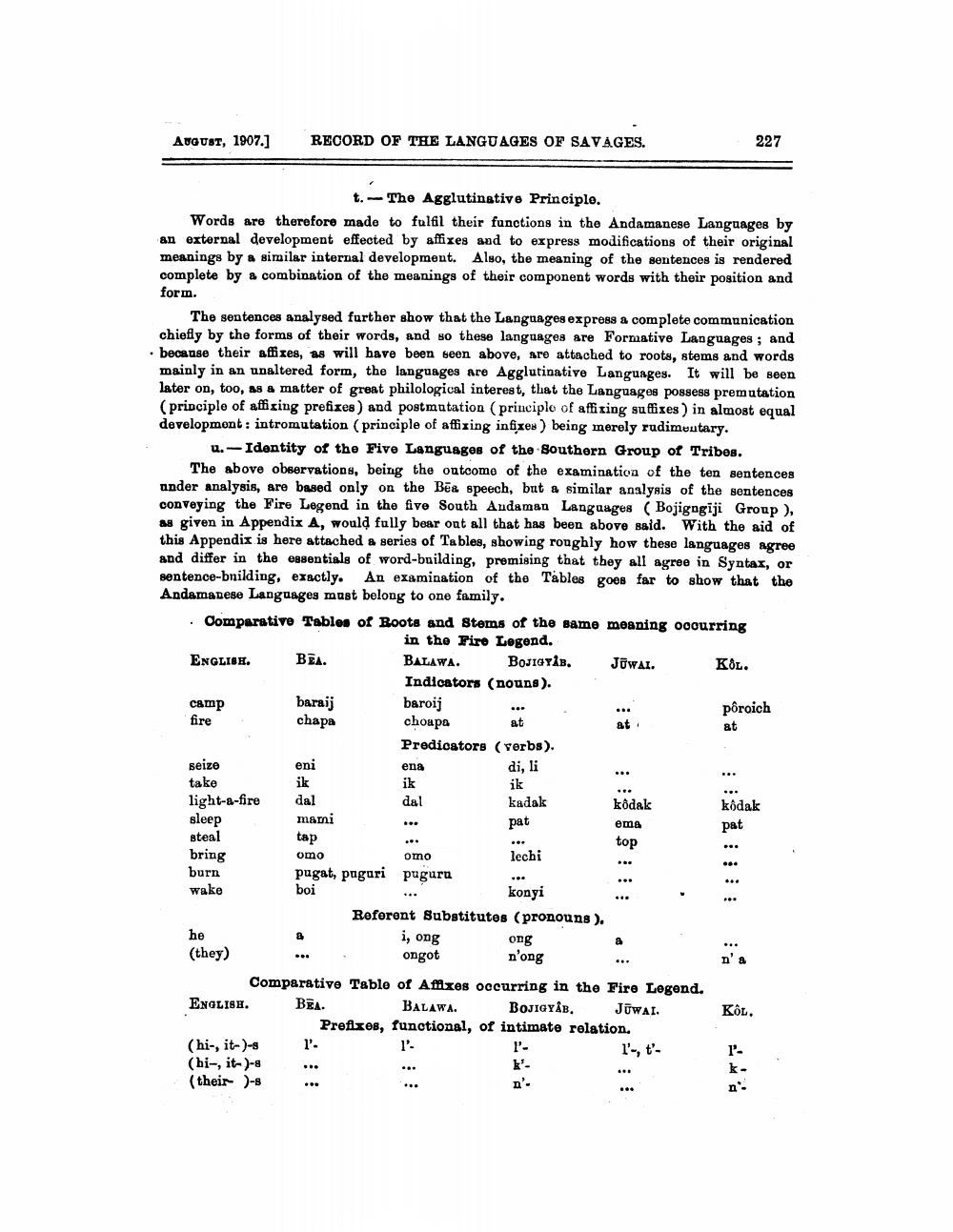________________
AUGUST, 1907.)
RECORD OF THE LANGUAGES OF SAVAGES.
227
t. - The Agglutinative Principle. Words are therefore made to fulfil their functions in the Andamanese Languages by an external development effected by affixes and to express modifications of their original meanings by a similar internal development. Also, the meaning of the sentences is rendered complete by a combination of the meanings of their component words with their position and form.
The sentences analysed further show that the Languages express a complete communication chiefly by the forms of their words, and so these languages are Formative Languages; and • because their affixes, as will have been seen above, are attached to roots, stems and words mainly in an unaltered form, the languages are Agglutinative Languages. It will be seen later on, too, as a matter of great philological interest, that the Languages possess premutation (principle of affizing prefixes) and postmutation (principle of affixing suffixes ) in almost equal development: intromutation (principle of affizing infixes) being merely rudimentary.
1.- Identity of the Five Languages of the Southern Group of Tribes. The above observations, being the outcome of the examination of the ten sentences ander analysis, are based only on the Bēs speech, but a similar analysis of the sentences conveying the Fire Legend in the five South Andaman Languages (Bojigogiji Group ), as given in Appendix A, would fully bear oat all that has been above said. With the aid of this Appendix is here attached a series of Tables, showing roughly how these languages agree and differ in the essentials of word-building, premising that they all agree in Syntax, or sentence-bnilding, exactly. An examination of the Tables goes far to show that the Andamanese Languages must belong to one family. . Comparative Tables of Boots and stems of the same meaning occurring
in the Fire Legend. ENGLISE. BEA. BALAWA. BOJIGYİB. JŪWAI. KÔL.
Indicators (nouns). camp baraij baroij
Đôroich chapa
choupa
Predicators (verbs). seize eni ena
di, li take ik ik
ik light-&-fire dal
dal kadak kôdak
kodak sleep mani
ema steal tap
top omo omo
lechi pugat, pagari pugura wake
boi
Reforont Substitutes (pronouns). he
i, ong
ong (they)
ongot
nong Comparative Table of Affixes occurring in the Firo Legend. ENGLISH. BEA.
BALAWA. BOJIGYB. JŪWAI.
Prefixos, functional, of intimate relation. (hi-, it-)(hi-, it-)-8 (their )-s
fire
at
pat
bring burn
konyi




